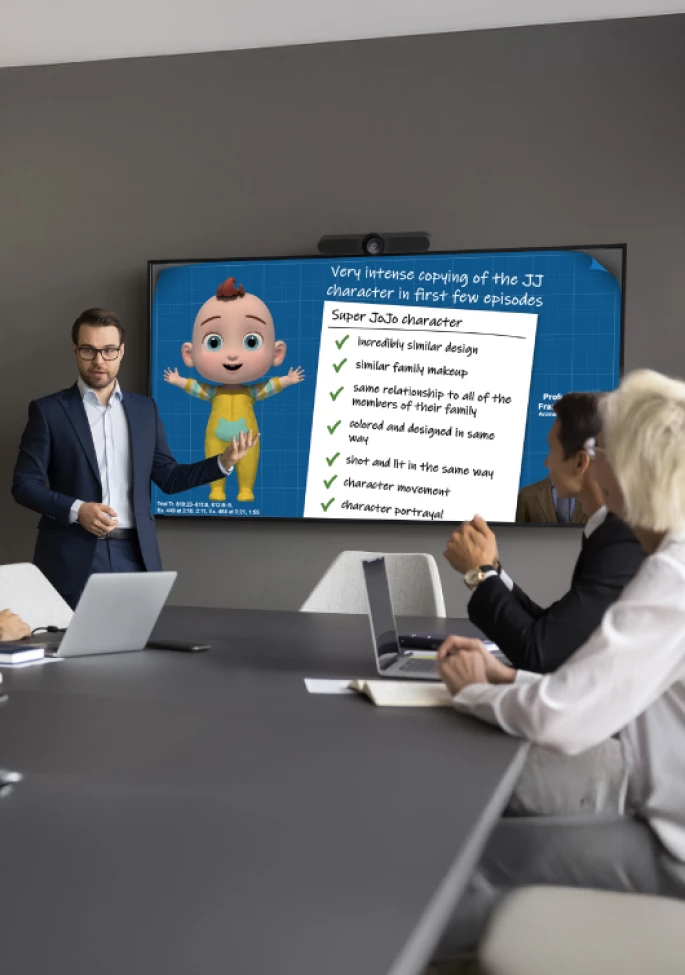Over the last two decades, I’ve attended plenty of mediations with clients to help them prepare and present their mediation presentation. But from what I’ve seen, there’s not much actual mediation going on. Instead, it usually goes something like this:
- Mediator: You never know what you’re going to get with some crazy jury, so your best bet is to settle this here with me. Would each side like to make an opening statement?
- Plaintiff: We know what a jury will do. We’re going to win.
- Defense: No, we know what a jury will do, and we’re going to win.
- (Both sides adjourn to separate rooms and eat M&Ms. Mediator goes back and forth between the two rooms all day. At 4:00 pm, everyone gets tired and goes home.)
Data shows that about half of mediations—including voluntary mediations—fail to resolve the underlying case. Why is that? Ultimately, it comes down to one central issue: unrealistic evaluations of the strengths and weaknesses of the case and, therefore, unrealistic expectations on the part of one or both parties.
A plaintiff thinks his case is worth millions; it’s not. A CEO thinks his company is untouchable; it’s not. How do we disabuse clients (and sometimes opposing counsel) of their illusory impressions of their own case and move more mediations forward to quicker resolution?
One answer: Let the parties find out what a jury actually would do.
When to Perform Jury Research Relative to Mediation
THE OLD MEDIATION MODEL
For years, more often than not, we would receive calls from clients whose mediation had failed and whose case looked likely to proceed to trial, and who therefore wanted to proceed with jury research (mock trials, deliberation groups, focus groups). Certainly, jury research has many benefits when a case is moving to trial: you can test and refine themes, learn how jurors react to key witnesses and evidence, and even gauge juror response to damages theory. But, our clients were missing an opportunity to bring the results of jury research to bear earlier in the litigation process.
A BETTER MEDIATION MODEL
Over time, clients began to request (and we began to recommend) that jury research take place earlier in the life of a case, i.e., before mediation. The feedback they received from mock trials and deliberation groups proved useful during mediation:
- Creating new valuation/reserve for the case, allowing attorneys to enter the mediation process with authority that would be more likely to affect a settlement.
- Helping the mediator help the other side to better understand the vulnerabilities of their case by sharing results and/or jury deliberation video excerpts with the neutral.
- On occasion, some clients have chosen to air the results publicly, sharing data and/or video not just with the neutral, but also with the other side.
Yet, there is another use for jury research and its application to the mediation process that has started to take hold around the country recently.
A NEW MEDIATION MODEL
This model involves conducting a mock trial or deliberation group during the mediation. Yes, with both sides present, with the mediator present—right in front of everybody. The idea here is that having both sides listen and watch what jurors have to say will ease the mediation process and speed resolution.
What if the plaintiff who believes his case is worth millions hears jurors say the accident was at least half his fault? What if the CEO who believes his company is untouchable hears jurors say that he was out of touch with his own workforce and that he’s still responsible for the mistakes made by an employee four levels down the org chart? Would the tone of the mediation change?
How the New Mediation Model Works
Conducting mediation-affiliated jury research is a six-step process:
- In concert with the neutral, a trial consultant conducts a brief pre-exercise meeting with both sides (usually via phone/virtual meeting), during which the overall framework of the research exercise/mediation are explained.
- Next is a longer prep meeting with both sides (the neutral need not be present) where the parameters of the jury exercise are established: how many jury groups will hear the evidence, how much time each side will take to present its case, what jury instructions will be presented, will the jurors see witnesses and, if so, how many and in what format, etc.
- The consulting team conducts a scientifically sound juror recruit.
- On the day of the exercise, the mediator reads a neutral statement to the jurors (much as a judge would before the beginning of a trial) and each side presents its case in the agreed-upon length and format.
- Once the jurors are instructed, they deliberate. As in any jury research exercise, the deliberations are viewable either through a two-way mirror or via closed-circuit television. The two parties can choose to watch the deliberations together or in separate rooms (hint: together is usually more productive). The trial consultants debrief the jurors after the deliberations.
- The mediator and trial consultants then debrief the sides on the results and common trends among the jury groups.
At this point, the sides can continue with the mediation on the spot, or they can adjourn to digest what they’ve learned and return to the process the next day.
BENEFITS
The key benefits of a joint jury research/mediation are:
- Great buy-in from both sides at the same time, and thus, a higher probability of resolution.
- More complete resolution for the parties (particularly plaintiffs, who are more likely to feel as if they’ve been heard and have “had their day in court,” and thus are more likely to let go of unrealistic expectations or punitive motives).
- Reduced costs: if both sides were likely to do jury research anyway, the cost of putting on the research is effectively cut in half. The cost for the neutral’s time could increase, especially if the exercise takes place one day and the mediation the next, but that increase is more than paid for by the reduction in jury research costs.
CONSIDERATIONS
Mediation-affiliated jury research is not for every case, nor is it for every client. There are key elements that need to be present in order for such an exercise to make sense:
- Both sides need to be reasonably motivated to resolve the case, and not just dragging themselves to mediation because a judge required them to do so.
- The mediator needs to be willing to share control of the process.
- Both sides must be willing to “show their hand.”
- Both sides must be willing to hear blunt feedback. The jurors rarely pull punches.
Final Thoughts
While it’s not a panacea, the new model of combining jury research with mediation is certainly another viable tool in your box. Under the right circumstances, it can help you creatively resolve cases in an era of disappearing jury trials and ineffective mediations.







